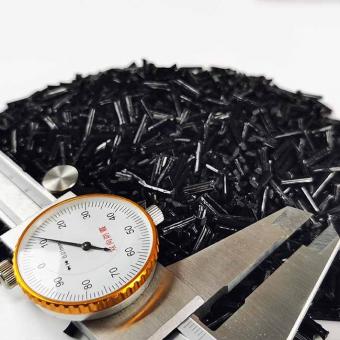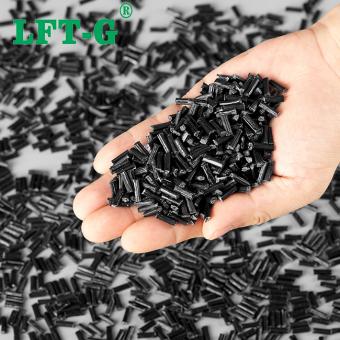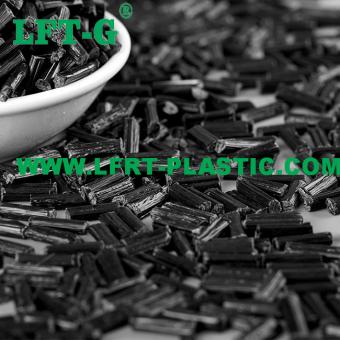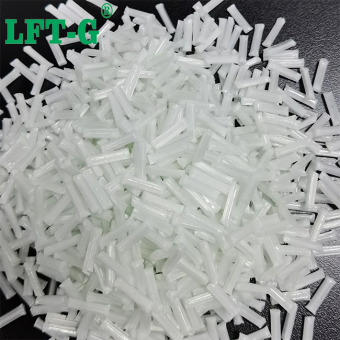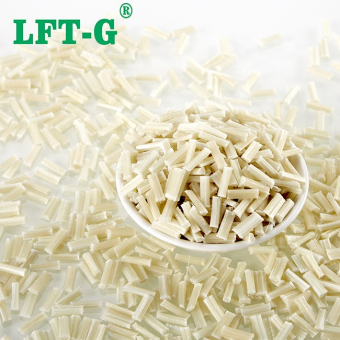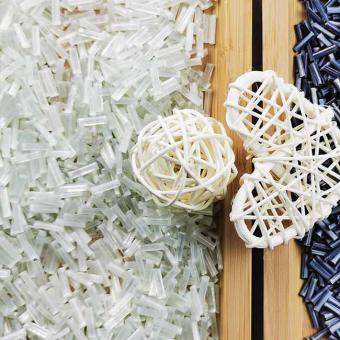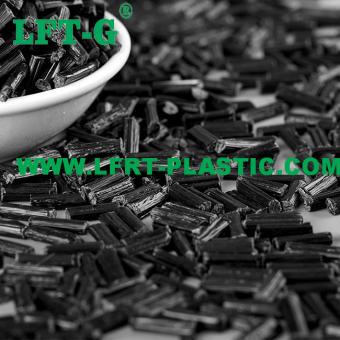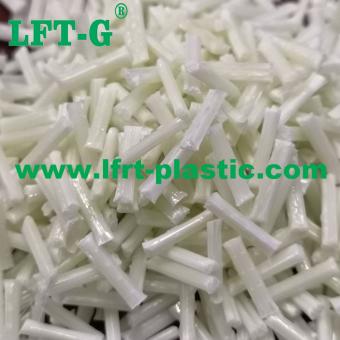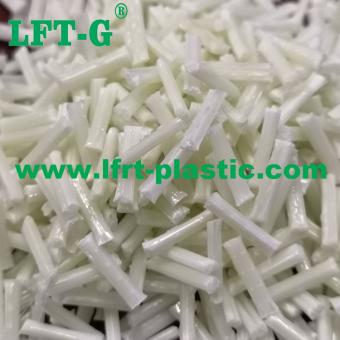-
Low warpage electronic appliance PP Polypropylene long glass fiber pelletsPP Polypropylene filled long glass fiber copolymer is one kind of engineering modifeid plastic materials of long glass fiber reinforced polypropylene;view more
-
PP Polypropylene long glass fiber pelletsPP Polypropylene filled long glass fiber copolymer is one kind of engineering modifeid plastic materials of long glass fiber reinforced polypropylene;view more
-
PP Polypropylene long glass fiber pellets customized red colorsPP Polypropylene filled long glass fiber copolymer is one kind of engineering modifeid plastic materials of long glass fiber reinforced polypropylene;view more
-
lft-g brand PLA compounds fill long carbon fiber 20%-60% high performance low warpage natural colorWhat is carbon fiber PLA? Carbon fiber reinforced PLA is an excellent material, strong, lightweight, with excellent layer bonding and low warpage. It has excellent layer adhesion and low warpage. Carbon fiber filaments are not as strong" as other 3D materials, but are much stiffer. The increased rigidity of carbon fiber means increased structural support, but reduced overall flexibility. It is slightly more brittle than regular PLA. Carbon PLA Specifications Flexural strength: 57 MPa Melting temperature: 190°C- 230°C Tensile strength: 45.5 MPa . Elongation at break: (73°F) 320% Standard tolerance: 0.05mm Layer thickness: 3mm Shore hardness: 45D Density: 1.3 g/cm3 (1300 kg/m3) Heat distortion: 21% to 85°C Shrinkage: very low when cooled to higher ambient temperatures Characteristics Moderate strain at break (8-10%), so the filaments are not very brittle, but very tough Very high melt strength and viscosity Good dimensional accuracy and stability Easy handling on many platforms Highly attractive matte black surface Excellent impact resistance and lightness Applications of carbon fiber PL A material Carbon PLA is the ideal material for frames, supports, housings, propellers, chemical instruments, etc. It is also particularly preferred by drone manufacturers and RC enthusiasts. Ideal for applications requiring maximum stiffness and strength. Other products you may wonder PA6-LCF PP-LCF PEEK-LCF About Long carbon fiber Long carbon fiber reinforced composites offer siginifacant weight savings and provide optimum strength and stiffness properties in reinforced thermoplastics. The excellent machanical properties of long carbon fiber reinforced composites make it an ideal replacement for metals. Combined with the design and manufacturing advantages of injection molded thermoplastics, long carbon fiber composites simplify the re-imagining of components and equipment with demanding performance requirements. Its widespread use in aerospace and other advanced industries makes it a "high-tech" perception of consumers - you can use it to market products and create differentiation from competitors. About us Xiamen LFT composite plastic Co., Ltd is a brand-name company that focuses on LFT&LFRT. Long Glass Fiber Series (LGF) & Long Carbon Fiber Series (LCF). The company's thermoplastic LFT can be used for LFT-G injection molding and extrusion, and can also be used for LFT-D molding. It can be produced according to customer requirements: 5~25mm in length. The company's continuous infiltration reinforced thermoplastics have passed ISO9001&16949 system certification, and the products have obtained lots of national trademarks and patents. We can offer you: 1. LFT & LFRT material technical parameters and leading edge design. 2. Mold front design and recommendations. 3. Provide technical support such as injection molding and extrusion molding.
- PLA pellets lcf 30 polymer
- high strength and high toughness reinforced pla pellets
- plastic pla lcf30
- best long carbon fiber pla lcf30 granules
- pla cf20 pla granule price
Tags :
-
LFT-G Homo PP fill Long carbon fiber LGF 20-60 injection molding high toughness and strength 12mmWhat is the Homo PP? Homopolymerized PP plastics are made by polymerizing a single propylene monomer and do not contain ethylene monomer in the molecular chain. Homopolymerized polypropylene pp plastic has the advantage of better strength. Disadvantages are poor impact resistance (more brittle), poor toughness, poor dimensional stability, easy aging, and poor long-term heat stability performance. PP as a thermoplastic polymer began commercial production in 1957, is the first of the regulated stand-alone polymers. Its historical significance is further reflected in the fact that it has been the fastest growing major thermoplastic and has a very wide range of applications within the thermoplastic field, especially in fiber and filament, film extrusion, and injection molding processes. HPP-LCF Long carbon fiber reinforced composites offer significant weight savings and provide optimum strength and stiffness properties in reinforced thermoplastics. The excellent mechanical properties of long carbon fiber reinforced composites make it an ideal replacement for metals. Combined with the design and manufacturing advantages of injection molded thermoplastics, long carbon fiber composites simplify the re-imagining of components and equipment with demanding performance requirements. Its widespread use in aerospace and other advanced industries makes it a "high-tech" perception of consumers - you can use it to market products and create differentiation from competitors. Application You can contact us for more detailed information about application Datasheet for your reference Long carbon fiber Xiamen LFT composite plastic Co., Ltd Xiamen LFT composite plastic Co., Ltd is a brand-name company that focuses on LFT&LFRT. Long Glass Fiber Series (LGF) & Long Carbon Fiber Series (LCF). The company's thermoplastic LFT can be used for LFT-G injection molding and extrusion, and can also be used for LFT-D molding. It can be produced according to customer requirements: 5~25mm in length. The company's continuous infiltration reinforced thermoplastics have passed ISO9001&16949 system certification, and the products have obtained lots of national trademarks and patents.
- self owing PP pellets
- high strength and high toughness reinforced pp pellets
- pp cf40 for electrical connector price
- superior waterproof pp granules
- reinforced Polypropylene PP virgin pure materials
Tags :
-
LFT-G PPS Polyphenylene sulfide composite long carbon fiber thermoplastic resin original color 12mmPPS Special engineering plastics are engineering plastics with higher overall performance and long-term use temperature above 150℃, PPS is one of them. The carbon fiber reinforced special engineering composites formed by carbon fiber as the reinforcement and these special engineering plastics as the matrix have excellent mechanical properties, wear resistance and high temperature resistance, which can be used in aerospace, marine or medical fields, and in some aspects show more desirable application advantages than thermosetting resins or even metal materials. PPS-LCF Polyphenylene sulfide PPS resin strength and hardness are relatively high, good mechanical properties, adapt to a variety of molding and processing methods, you can achieve secondary precision molding, the dimensional stability of the product is better. Its moisture absorption rate of only 0.03%, low density, melt temperature Tm of 285 ℃, the glass transition temperature Tg of 90 ℃, thermal stability is very good, in the air state, to reach 430 ℃ -460 ℃ before decomposition, high flame retardant grade, 200 ℃ insoluble in most organic solvents, excellent electrical insulation. As a special engineering plastics, PPS advantages are outstanding, but defects also exist, for example, because of the large number of benzene ring to make its impact resistance and elongation is not good enough, but through the carbon fiber reinforced way, can further improve the performance of the material strength and thermal stability, so as to better show the value of the application of the material. Through the carbon fiber reinforced intervention, changing the original insulating properties of PPS into a conductive, anti-static properties, polyphenylene sulfide PPS toughness and strength can be substantially increased and improved, becoming one of the most commonly used composite materials in the aerospace field. It is used in aircraft landing gear, wings, hatches, fuel tank port covers, J-shaped nose cone, cabin interior trim and other components, not only to help increase the impact resistance, high temperature and corrosion resistance of these parts, more through the reduction in mass, to enhance the aircraft load efficiency and reduce fuel consumption. Compared with metal, this composite material has the advantages of low cost and easy processing, the cost can be reduced by 20-50 percent. High bonding must be maintained between the carbon fiber reinforcement and the PPS resin matrix. When the product is subjected to stress, this high bonding helps the interface to transfer the external load to the fibers effectively, which can effectively prevent cracks from debonding between the interfaces, in addition to enhancing the mechanical properties of the composite. To make the resin matrix and carbon fiber reinforcement between the formation of high bonding, we must make the molten state of PPS resin and carbon fiber reinforcement in full contact, full impregnation, so that the fiber body in the case of uniform dispersion to achieve good impregnation effect. Production process Application of PPS-LCF Xiamen LFT composite plastic Co., Ltd We will offer you: 1. LFT & LFRT material technical parameters and leading edge design 2. Mold front design and recommendations 3. Provide technical support such as injection molding and extrusion molding. About us
- PPS polyphenylent
- pps lcf40 granules raw material
- PPS long carbon fiber extrusion
- pps LCf40 plastic injection part
- PPS polymer carbon fiber pellets
Tags :
-
LFT-G PP Polyphenylene compounds long glass fiber thermoplastic resin original color sample availablePP fill Long glass fiber Advantages of glass fiber reinforced PP material in modified PP material. 1、The heat resistance temperature of glass fiber reinforced PP is much higher. 2、The shrinkage of glass fiber reinforced PP decreases a lot, and the rigidity is greatly improved. 3, glass fiber reinforced PP plastic, will not stress cracking, impact resistance improved a lot. 4、After glass fiber reinforced, the burning performance of PP plastic is reduced a lot. 5、After glass fiber reinforcement, the strength of PP is improved, such as: tensile strength, compressive strength, bending strength. The disadvantages of glass fiber reinforced PP material in modified PP material. 1、After glass fiber reinforcement, the transparency of the material decreases. 2、After glass fiber reinforced, the toughness of PP decreases and the brittleness increases. 3、After glass fiber reinforced, the hygroscopic property of PP is greatly enhanced, therefore, it should be dried when injection molding. 4、After glass fiber reinforcement, the melt viscosity of PP increases, the fluidity becomes worse, and the injection pressure increases a lot. 5、After glass fiber reinforcement, the fluidity of PP material is poor, and the injection temperature of reinforced plastic is increased by 10℃-30℃. 6、After glass fiber reinforced, attention should be paid to the surface corrosion treatment and surface hardness treatment of the equipment. 7、After glass fiber reinforcement, during the injection process, glass fiber can enter the surface of plastic products, making the surface of the products become rough. It is necessary to use the mold temperature machine to heat the mold when injection molding, so that the plastic polymer can enter the surface of the products and obtain a higher surface quality. TDS for reference only We have general grade, heat-resistance grade, UV-resistance grade, toughen-resistance grade for you to choose. Application General grade: Car parts, washing machine parts, water pump parts, water treatment components, furniture parts, etc. Heat-resistance grade: Car front and back module, water tank frame, battery bracket, engine cover, skylight frame, etc. UV-resistance grade: Car handle, car mirror parts, battery case, truck outside pedal etc. Toughen resistance grade: Power tools, pump shell, pipe fittings etc. LGF VS SGF Frequently askes questions Q. Does long glass fiber and long carbon fiber injection have special requirements for injection molding machines and molds? A. There are certainly requirements. Especially from the product design structure, as well as the injection molding machine screw nozzle and mold structure injection molding process must consider the requirements of long fiber. Q. The causes and solutions for floating fibers for long glass fiber and long carbon fiber products. A. Due to the low temperature of the sol or the low temperature of the mold and the low injection molding pressure, the glass fiber and the resin can not be well compatible and diffused. The uneven temperature of the mold surface mold will cause the floating fiber problem, and can be solved by increasing the sol temperature, mold temperature and injection pressure. Q. Long glass fiber reinforced PP will reduce the toughness of the material and increase the brittleness. Is there any way to solve this problem? A. Long glass fiber and long carbon fiber will greatly enhance the impact and tensile strength of the substrate.
- best long glass fiber pp lgf30 granules
- pp gf30 for electrical connector price
- furniture polypropylene compounds lgf
Tags :
-
LFT-G modified nylon66 PA66 filling long glass fiber compounds toughen resistance grade for electronic appliancesPA66-LGF Information PA66 is one of the most produced and widely used polyester series products. It has high grain size, excellent tensile properties, bending properties, tensile strength and other material mechanical properties, and its excellent ultra-low temperature characteristics and organic chemical properties. It is a class of rubber products with wide range of application, stable characteristics, good mechanical properties, high quality insulation, low density, easy processing and molding, self-extinguishing, and good wear resistance. Therefore, it is widely used in vehicles, electronic and electrical, chemical materials, industrial equipment, instrument panels, construction projects and other industries. However, it has high water absorption, poor alkali resistance, dry ultra-low temperature impact, low compressive strength and easy to deform after absorbing moisture, which affects the reliability of goods specifications. People have improved PA66 in a variety of ways, adding PA66 chemical fiber is one of them. After adding glass fiber, its impact force, heat deformation, material mechanical properties, molding processability and acid resistance are significantly improved. Glass fiber is a class of functional raw materials with high quality characteristics. This utility model has the advantages of low cost, non-combustibility, high temperature resistance, acid resistance, high tensile strength, high impact compressive strength, low tensile strength, high quality insulation properties, high quality insulation properties, etc. It is usually used as a raw material to improve organic chemical polymers or functional materials and composites. The most important hazard of proportional limits to raw materials is mechanical properties. The material mechanical properties of modified PA66 are also related to the composition of glass fibers. The tensile strength, bending strength and impact compression strength of PA66 increase with the glass fiber composition after the addition of PA66 chemical fibers. The tensile and flexural strengths of the managed system increased linearly, but the glass fiber composition was 30%. The trend of increasing tensile and flexural strengths showed some improvement. The results show that PA66 can produce a reasonable page layer, which can reasonably transfer the ground stress between the matrix and page, and thus improve the compressive strength of the matrix. PA66-LGF TDS The datasheet was tested by Xiamen LFT, for your reference only. PA66-LGF Application Suitable for many fileds, other application you can ask for our technical advice. Details Number Color Length Sample MOQ Port of Loading Delivery time Payment terms PA66-NA-LGF30 Original color (can be customized) 12mm (can be customized) Available 25kg Xiamen Port 7-15 days after shipment Discussed Xiamen LFT composite plastic Co., Ltd Xiamen LFT composite plastic Co., Ltd. is a brand-name company that focuses on LFT&LFRT. Long Glass Fiber Series (LGF) & Long Carbon Fiber Series (LCF). The company's thermoplastic LFT can be used for LFT-G injection molding and extrusion, and can also be used for LFT-D molding. It can be produced according to customer requirements: 5~25mm in length. The company's long-fiber continuous infiltration reinforced thermoplastics have passed ISO9001 &16949 system certification, and the products have obtained lots of national trademarks and patents. We will offer you: 1. LFT&LFRT material technical parameters and leading edge design 2. Mold front design and recommendations 3. Provide technical support such as injection molding and extrusion molding.
- self owing pa66 pellets
- high strength and high toughness reinforced pa66 pellets
- best long glass fiber pa66 lgf30 granules
- PA66 6 twin screw lgf pellets
- Long Fiber PA66 granules Application
Tags :
-
LFT-G TPU resin filling long glass fiber LGF30 engineering plastics reinforced compounds high tensile strengthTPU introduction Thermoplastic polyurethane (TPU) elastomers are linear polymers formed by the copolymerization of hard and soft chain segments, which have physical properties such as tensile, abrasion and heat resistance, and elasticity similar to rubber. Thanks to the excellent product performance, the application fields of TPU are expanding, including daily consumer goods, construction, medical, military, automotive, agriculture and many other fields. New products and applications are also emerging, such as large-diameter hoses (shale gas extraction), charging cables for new energy vehicles, foamed TPU (ETPU) sports shoes midsoles prepared by supercritical foaming process, invisible braces, etc. Fiber reinforced modified TPU composites TPU has good impact resistance, but in some applications, high modulus of elasticity and very hard material is required. Glass fiber reinforced modification is a common technical means to improve the elastic modulus of the material. Through modification, thermoplastic composites with many advantages such as high elastic modulus, good insulation, heat resistance, good elastic recovery, good corrosion resistance, impact resistance, low coefficient of expansion and dimensional stability can be obtained. Long glass fiber VS Short glass fiber Compared with the short fiber, long fiber has more excellent performance in mechanical properties. It is more suitable for large products and structural parts. It has 1-3 times higher toughness than short fiber, and the tensile strength is increased by 0.5-1 times. Thermoplastics VS Thermosets Thermosets: when heated for the first time, they can soften and flow, and when heated to a certain temperature, they produce a chemical reaction a cross-chain curing and become hard, this change is irreversible, after that, when heated again, they can no longer become soft and flow. Thermoplastic: thermoplastic resin is the main component, and various additives are added to form a plastic. Under certain temperature conditions, plastic can be softened or melted into any shape, and the shape remains unchanged after cooling; this state can be repeated many times and always has plasticity, and this repeated is only a physical change. Advantages Thermosets: Thermoset plastics retain their strength and shape even when heated. This makes thermoset plastics ideal for producing permanent parts and large, strong shapes. In addition, these parts have excellent strength properties (despite their fragility) and do not lose significant strength when exposed to higher operating temperatures. Thermoplastics: Thermoplastics are the most widely used plastics and typically have high chemical and thermal resistance, as well as a high strength structure that is not easily deformed. It is made of thermoplastic resin as the main component with various additives. Thermoplastic products have excellent electrical insulation, with very low dielectric constant and dielectric loss, suitable for high Frequency and high voltage insulation materials. TPU-LGF applications TDS for TPU-LGF Products details Number Length Colour Sample Price MOQ Package Delivery time TPU-NA-LGF30 12mm (can be customized) Natural colour (can be customized) Available Need to be confirmed 25kg 25kg/bag 7-15 days after shipment About us Company Xiamen LFT composite plastic Co., Ltd. is a brand-name company that focuses on LFT&LFRT. Long Glass Fiber Series (LGF) & Long Carbon Fiber Series (LCF). The company's thermoplastic LFT can be used for LFT-G injection molding and extrusion, and can also be used for LFT-D molding. It can be produced according to customer requirements: 5~25mm in length. The company's long-fiber continuous infiltration reinforced thermoplastics have passed ISO9001 &16949 system certification, and the products have obtained lots of national trademarks and patents.
- tpu lgf30 for toe cap
- self owing tpu pellets
- tpu different resin lgf
- high strength and high toughness reinforced tpu pellets
- self owing tpu pellets polymer
Tags :
-
LFT-G PPS Polyphenylene sulfide composite long carbon fiber thermoplastic resin high rigidity and strengthPPS Information Polyphenylene sulfide (PPS) is not enhanced before modification, its disadvantages are brittle, poor toughness, low impact strength, after filling glass fiber, carbon fiber and other enhancements modified to overcome the above shortcomings, to obtain very good overall performance. PPS filling Long carbon fiber In the modified engineering plastics industry, long fiber reinforced composites are composites made from long carbon fibers, long glass fibers and polymer matrix through a series of special modification methods. The most important feature of long fiber composites is that they have superior performance that the original materials do not have. If we classify them according to the length of the reinforcing materials added, they can be divided into: long fiber, short fiber and continuous fiber composites. Long carbon fiber composites are one kind of long fiber reinforced composites, which are a new fiber material with high strength and high modulus. It is a new material with excellent mechanical properties and many special functions. Corrosion resistance: LCF carbon fiber composite materials have good corrosion resistance and can adapt to the harsh working environment. UV resistance: the ability to resist UV is strong, and the products are less damaged by UV. Abrasion and impact resistance: the advantage of comparing with general materials is more obvious. Low density: lower density than many metal materials, can achieve the purpose of light weight. Other properties: such as reducing warpage, improving rigidity, impact modification, increasing toughness, electrical conductivity, etc. LCF carbon fiber composites have higher strength, higher rigidity, lower weight, and excellent electrical conductivity compared with glass fiber. PPS TDS for reference PPS Application Other products you can also contact us for more technical advice. Q&A 1. Are carbon fiber composite products very expensive? The price of carbon fiber composite products is closely related to the price of raw materials, the level of technology and the number of products. The higher the performance of the raw material, the more expensive it is, such as the carbon fiber PEEK thermoplastic material used in orthopedics. Of course, the more complex the manufacturing process, the greater the working time and workload, and the increased production costs. However, the larger the order quantity, the lower the cost per product. In the long run, the superior performance of carbon fiber will extend the life of the product, reduce the number of maintenance, and is also very beneficial to reduce the cost of use. 2. Are carbon fiber composite products toxic? Carbon fiber composites are made of carbon fiber filaments mixed with ceramics, resins, metals and other substrates, and are generally not toxic. For example, the above-mentioned PEEK material is made of food-grade resin, which is very compatible with the human body and is not only harmless to humans, but also becomes a more ideal material for orthopedic surgery because of its high strength and elastic modulus close to the bone cortex. Carbon fiber medical bed plate, will be in daily contact with many patients body, will not have adverse effects on the human body, on the contrary, for the accuracy of medical diagnosis and a great help. 3. What is the difference between thermosetting carbon fiber composites and thermoplastic carbon fiber composites? Thermoset carbon fiber composites favor the role of curing agent in curing and molding. While thermoplastic carbon fiber composite products mainly rely on cooling down to achieve the shaping. Thermoplastic carbon fiber composites are not as popular as thermoset carbon fiber composites, mainly because they are expensive and are generally used in high-end industries. Thermoset carbon fiber composites are difficult to recycle due to the limitation of the resin matrix itself, and are generally not considered; thermoplastic carbon fiber composites can be recycled, and can be made twice as long as they are heated to a certain temperature. About us We will offer you: 1. LFT & LFRT material technical parameters and leading edge design 2. Mold front design and recommendations 3. Provide technical support such as injection molding and extrusion moldingview more
-
LFT MXD6 LGF composite plastic long glass fiber filling high performance injection molding customized colorMXD6 The conventional aliphatic nylon is easy to process and mold but has strong water absorption and low glass transition temperature; the all-aromatic nylon solves the shortcomings of aliphatic products to a large extent, but the processing difficulty increases exponentially. After 1972, Toyo Textile and Mitsubishi Gas Chemical synthesized a new type of semi-aromatic nylon MXD6, which not only overcame the shortcomings of aliphatic and all-aromatic to a large extent, but also had some advantages of all-aromatic resin. It has a wide range of applications in the fields of packaging materials and engineering structural materials, where gas barrier properties are required. Compared with other materials, MXD6 has the advantages of high strength and elastic modulus, high glass transition temperature, low water absorption and moisture permeability, fast crystallization, easy molding and manufacturing, excellent gas barrier properties, and good barrier to carbon dioxide and oxygen even under high humidity. As an engineering plastic, MXD6 can replace the use of metal materials in the automotive industry, such as power tools, magnetic materials, automotive shells, chassis, beams, engine accessories, etc. The main component of the Reny series of Mitsubishi Gas on the market is MXD6. In addition, as a molding material MXD6 is also used to produce monofilaments and special fibers. Long glass fiber Long glass fiber rovings Glass fiber is an inorganic non-metallic materials with excellent performance, a wide range of advantages is good insulation, heat resistance, corrosion resistance, high mechanical strength, but the disadvantage is the brittle nature, wear resistance is poor. It is made of glass balls or waste glass as raw material by high temperature melting, drawing, yarn, weaving and other processes, its monofilament diameter of a few microns to more than twenty microns, equivalent to a hair of 1/20-1 / 5, each bundle of fiber filaments are composed of hundreds or even thousands of monofilaments. Glass fiber is commonly used as reinforcing materials in composite materials, electrical insulation materials and thermal insulation materials, circuit substrates and other areas of the national economy. Plastics are ubiquitous in everyday life, from common consumer goods to durable goods. To improve the strength of plastics, thermoplastic materials are often reinforced by glass fiber or carbon fiber. In the face of high loads and impact stresses at high and low temperatures, which are often not matched by ordinary short glass fiber materials, polymers begin to soften or become brittle, and long glass fiber reinforced polymers are created. Long glass fiber generally refers to glass fiber with length over 10mm. MXD6 filling Long glass fiber Datasheet for reference Application MXD6-LGF is mainly applied in the large parts. About company Xiamen LFT composite plastic Co., Ltd. is a brand-name company that focuses on LFT&LFRT. Long Glass Fiber Series (LGF) & Long Carbon Fiber Series (LCF). The company's thermoplastic LFT can be used for LFT-G injection molding and extrusion, and can also be used for LFT-D molding. It can be produced according to customer requirements: 5~25mm length. The company's long-fiber continuous infiltration reinforced thermoplastics have passed ISO9001&16949 system certification, and the products have obtained lots of national trademarks and patents. We will offer you: 1. LFT&LFRT material technical parameters and leading edge design 2. Mold front design and recommendations 3. Provide technical support such as injection molding and extrusion molding Quality Management System ISO9001&16949 Certification National Laboratory Accreditation Certification Modified Plastics Innovation Enterprise Honorary Certificate Heavy metal REACH & ROHS testing Welcome to contact us!
- MXD6 LFT-G
- thermoplatic resin lft gfrp
- MXD6 for injection mold engineering plastic
- modified MXD6 high toughness
- lft raw materials MXD6
Tags :
-
LFT-G MXD6 compounds with long glass fiber filler high performance reinforced plastic customized virgin gradeMXD6 materials MXD6 is a crystalline polyamide resin, which is synthesized by condensation of m-phenylenedimethylamine and adipic acid. 1、Maintain high strength and rigidity in a wide temperature range 2、High heat deflection temperature, small coefficient of thermal expansion 3、Low water absorption, small size change after water absorption, less mechanical strength reduction 4、Small shrinkage rate of molding, suitable for precision molding process 5、Excellent paintability, especially suitable for surface painting under high temperature 6、Excellent barrier to oxygen, carbon dioxide and other gases MXD6-LGF materials MXD6 can be laminated with glass and carbon fibers for materials containing 20-60% glass fiber reinforcement with exceptional strength and stiffness. Even when filled with high levels of glass fiber, its smooth, resin-rich surface creates a high gloss surface as without glass fiber, making it extremely suitable for painting, metal coating or generating naturally reflective shells. 1. High fluidity for thin wall It is a very high flowing resin that can easily fill thin walls as thin as 0.5 mm thick even with glass fiber content as high as 60%. 2. Excellent surface finish The resin-rich perfect surface has a highly polished appearance, even with a high glass fiber content. 3. Very high strength and stiffness With 50-60% glass fiber reinforcement, MXD6 has a tensile and flexural strength similar to many cast metals and alloys. 4. Good dimensional stability At ambient temperature, the coefficient of linear expansion (CLTE) of MXD6 glass fiber composites is similar to that of many cast metals and alloys. It is highly reproducible due to low shrinkage and the ability to maintain tight tolerances (length tolerances can be as low as ± 0.05% if properly formed). Datasheet for reference produce processing Extrusion mold Injection mold Frequently asked questions Q. Does long glass fiber and long carbon fiber injection have special requirements for injection molding machines and molds? A. There are certainly requirements. Especially from the product design structure, as well as the injection molding machine screw nozzle and mold structure injection molding process must consider the requirements of long fiber. Q. How to choose the requirement method and length of the material when using long fiber reinforced thermoplastic material? A. The selection of materials depend on the requirements of the products. It is necessary to assess how much the content is enhanced and how much length is more appropriate, which are depending on the performance of the products. Q. Under what circumstances can long fiber replace short fiber? What are the common alternative materials? A. Traditional staple fiber materials can be replaced with long glass fiber and long carbon fiber LFT materials in the case of customers whose mechanical properties cannot be met or where higher metal substitutes are desired. For example, PP long glass fiber is often replacing nylon reinforced glass fiber, and nylon long glass fiber is replacing PPS series. We will offer you 1. LFT & LFRT material technical parameters and leading edge design 2. Mold front design and recommendations 3. Provide technical support such as inejction molding and extrusion molding Main products
- mxd6 granules lgf30
- lft-g mxd6 conposite plastic glass fiber
- injection mxd6 best price compounds
- thermoplastic resin pa12 with fiber
- low warpage electronic appliance
- mxd6 for engineering plastic long fiber
Tags :

 e-mail
e-mail English
English français
français Deutsch
Deutsch русский
русский italiano
italiano español
español português
português العربية
العربية 日本語
日本語 한국의
한국의 中文
中文















